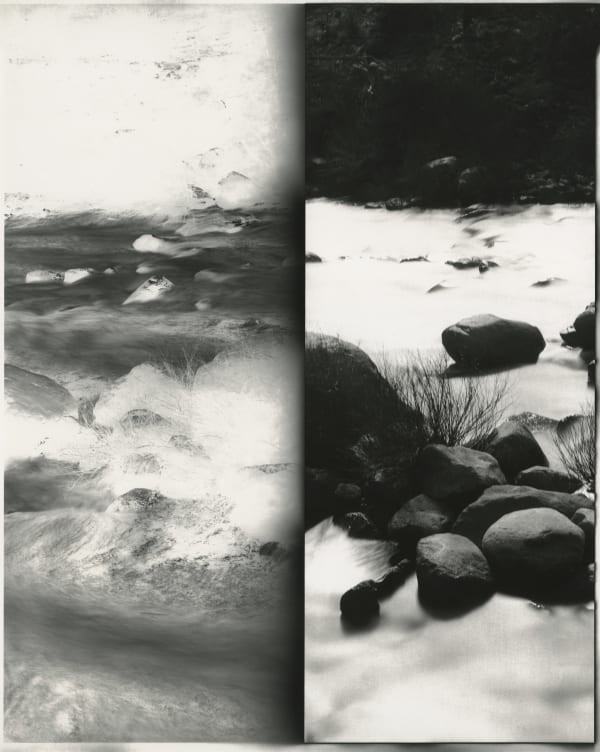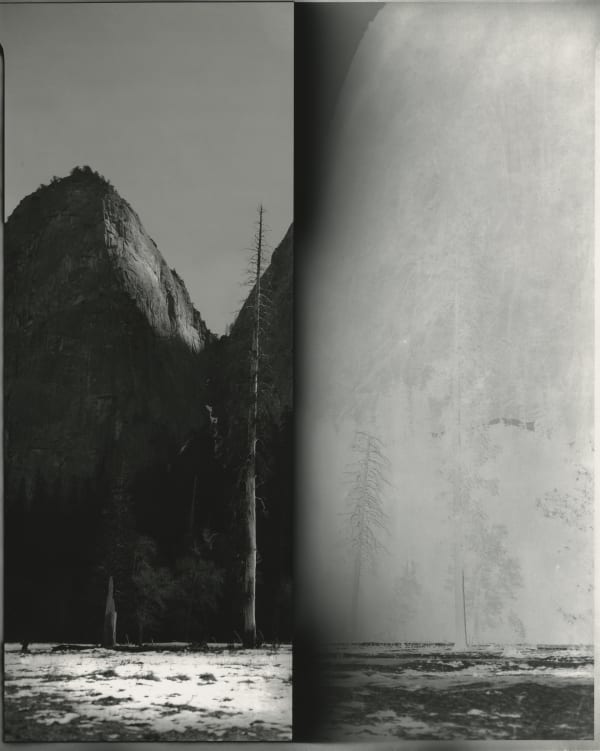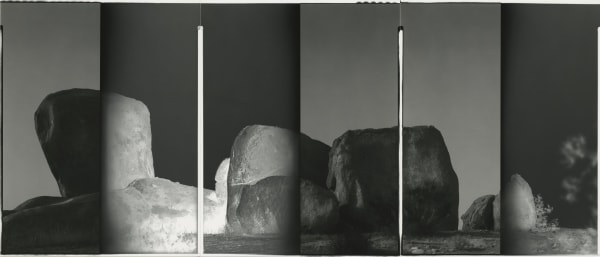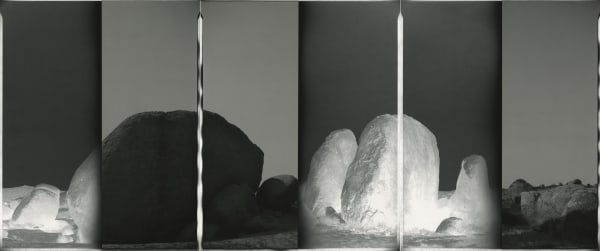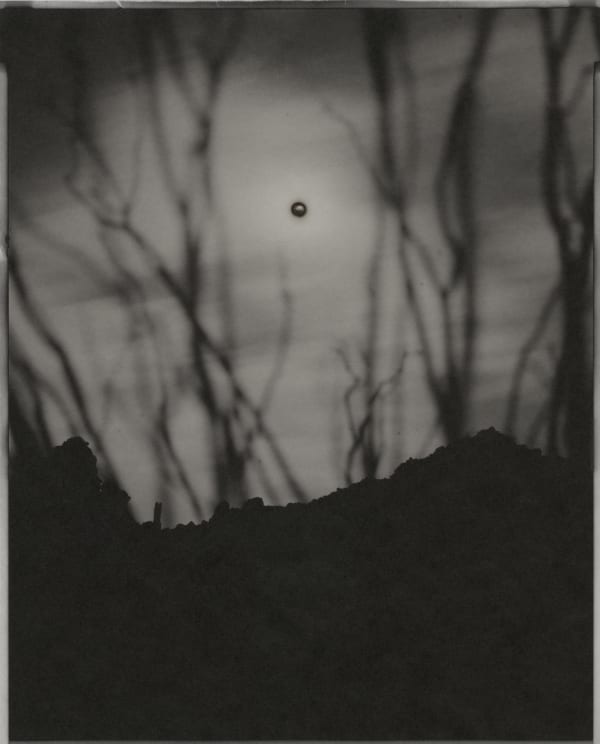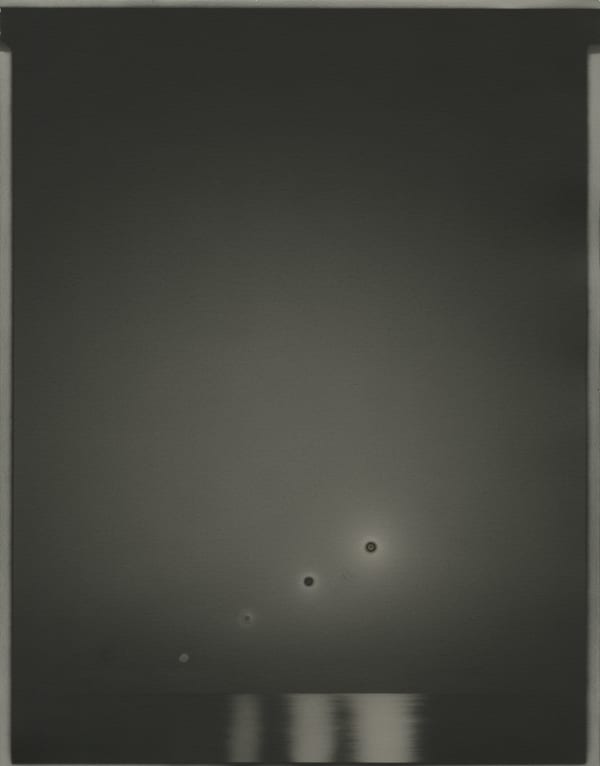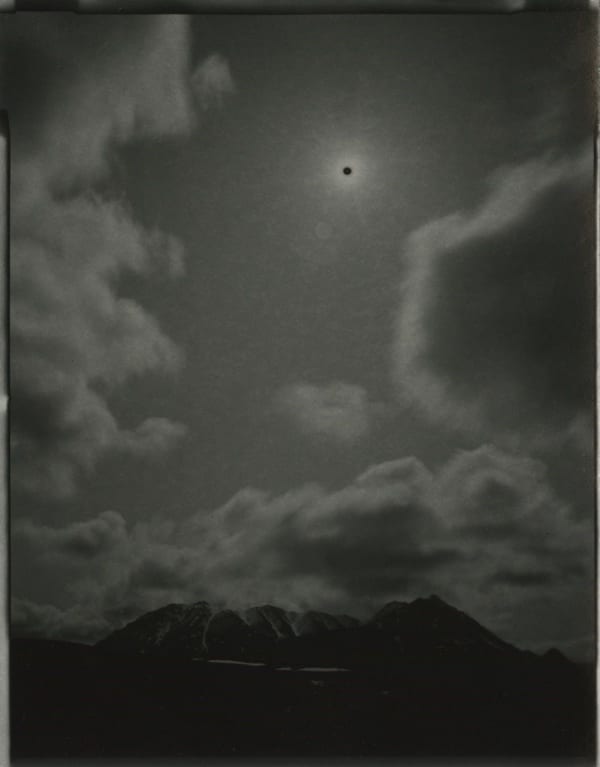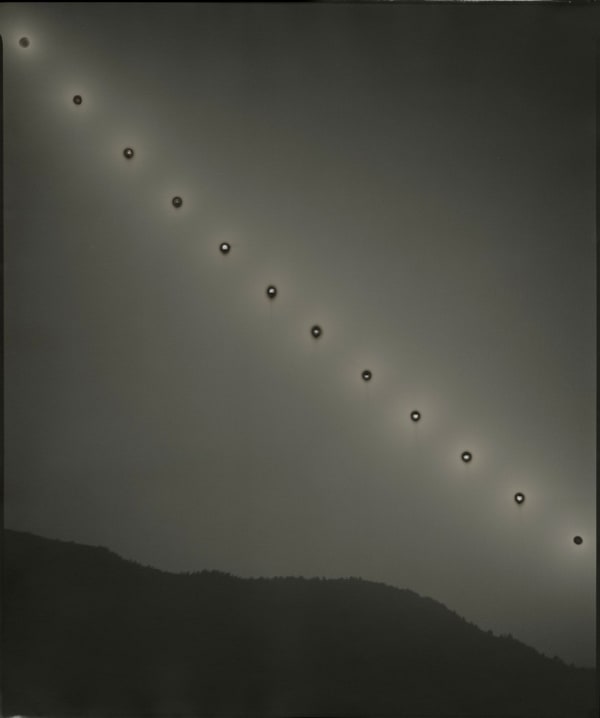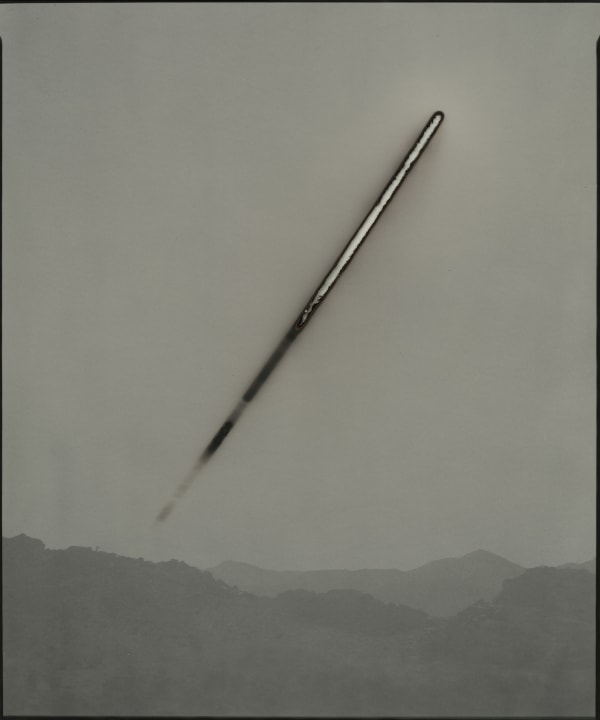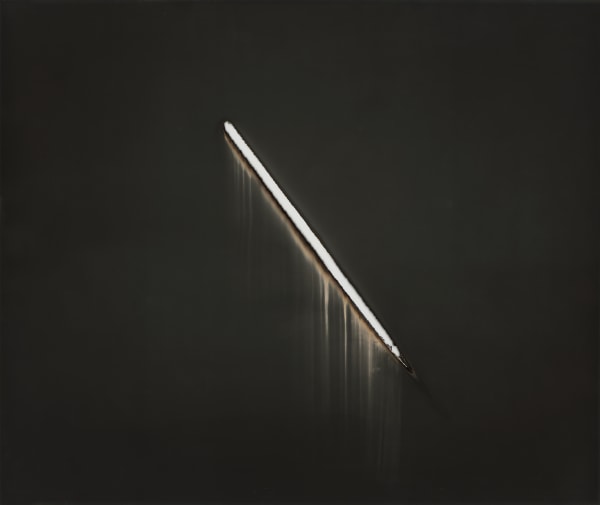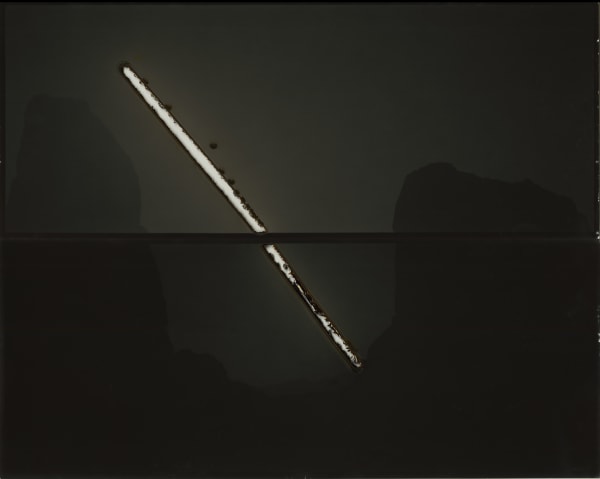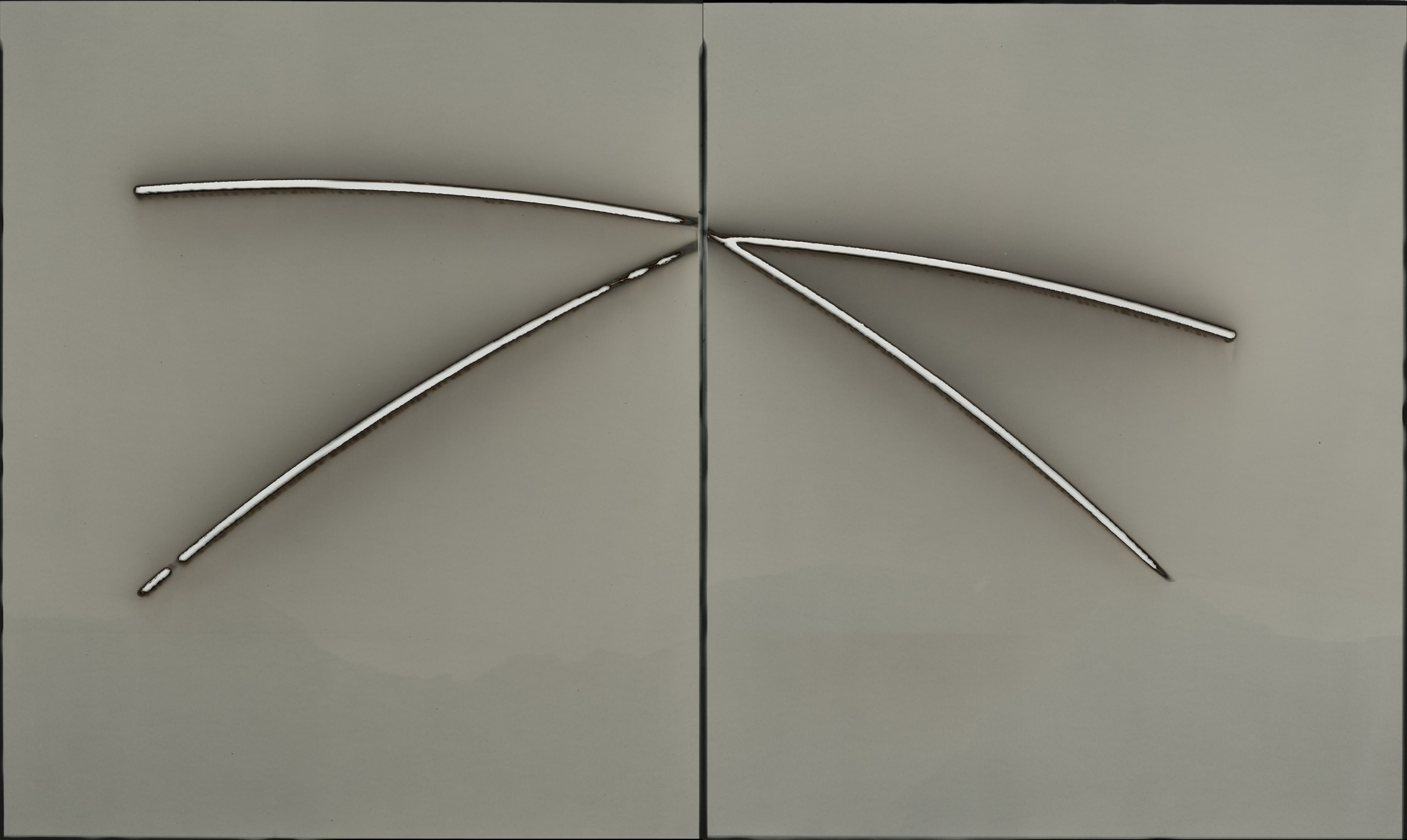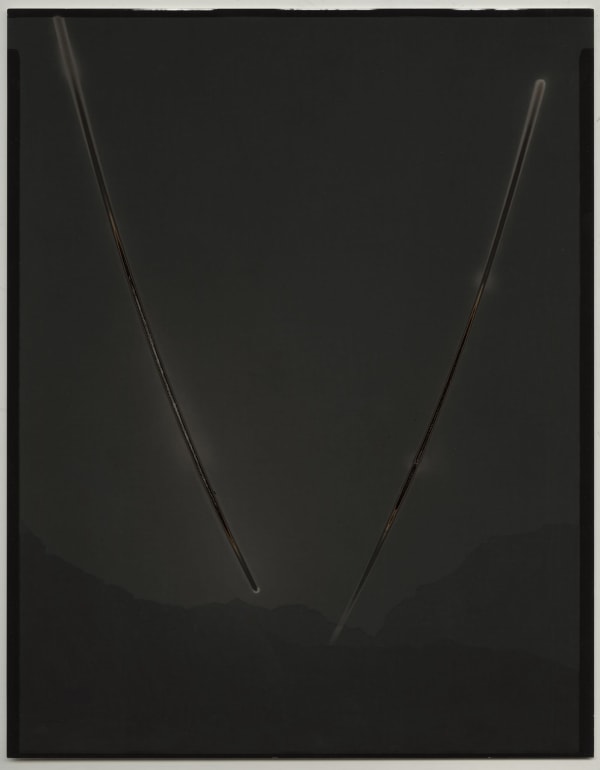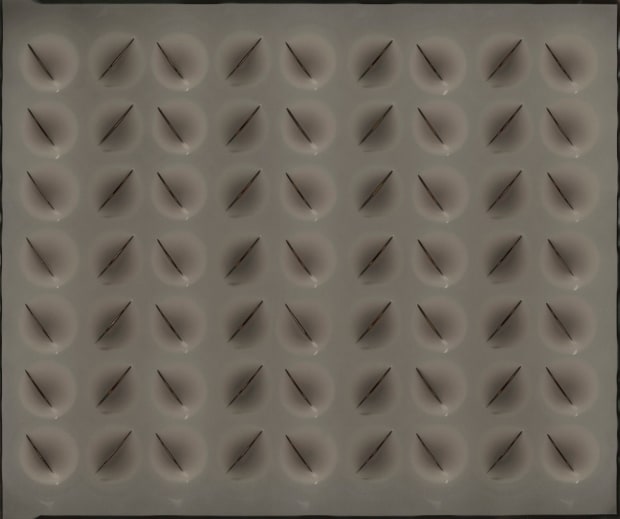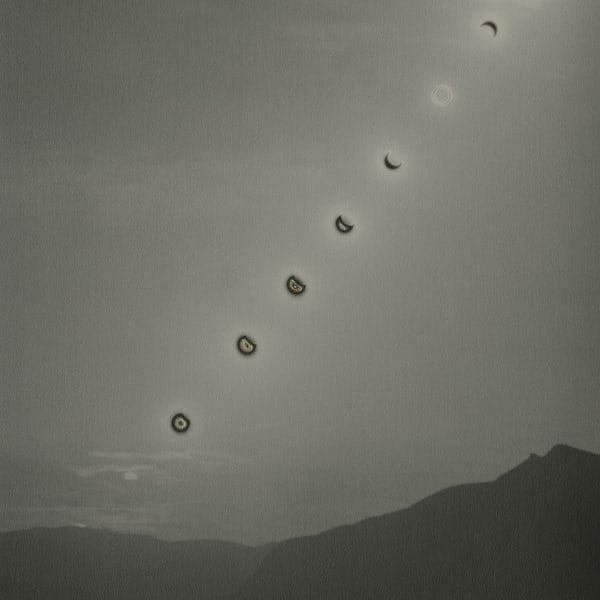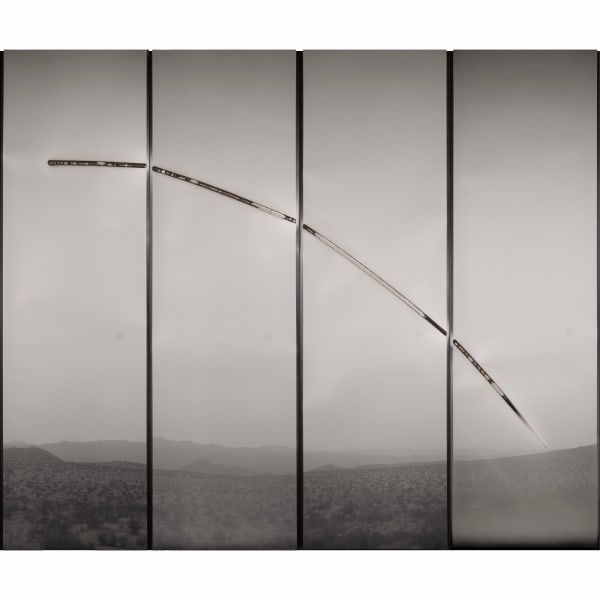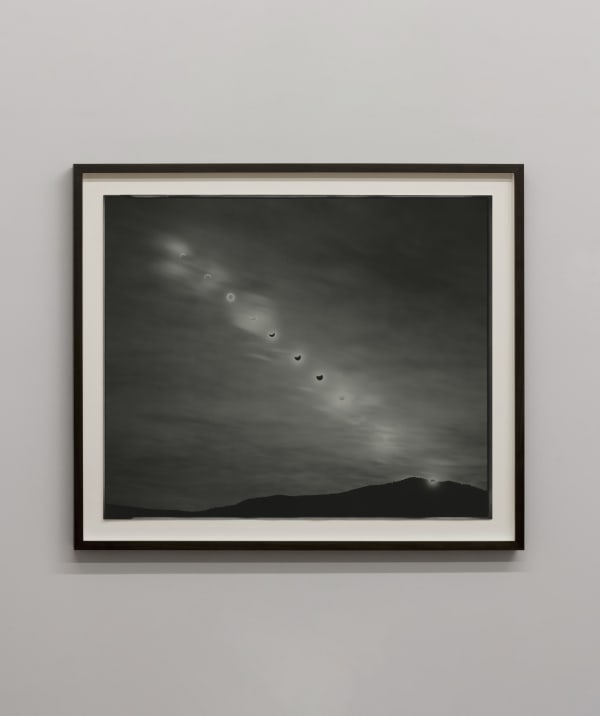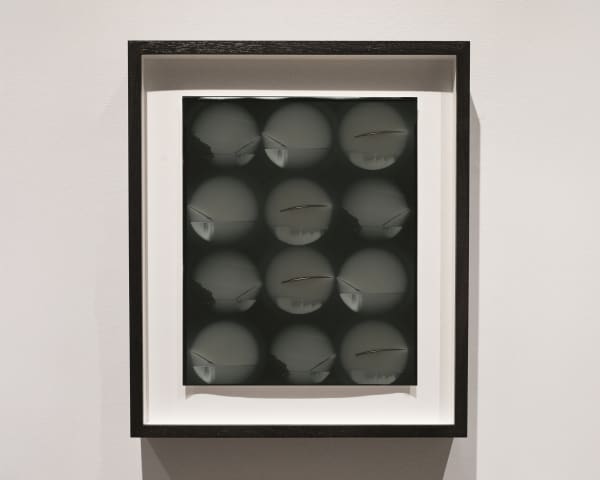-

-

Inverse #59 (Mojave), 2023
Paper Negative, partial in-camera solarization
20" x 16" (51 x 40.5 cm)
Framed: approximately 23 9/16" x 19 3/4" (60 x 50 cm)
Unique -
-
 Inverse #71 (Mojave), 2023
Inverse #71 (Mojave), 2023
Four Paper Negatives, partial in-camera solarizations
Dimensions, each element: 14" x 11" (35.5 x 28 cm)
Overall, Unframed: 14” x 44 3/8” (35.5 x 112.5 cm)
Unique
Additional Artwork Details -
"While exposing a Sunburn piece with my large camera, I decided somewhat impulsively to sacrifice a cracked dark slide used with a view camera to expose or cover the light sensitive material. Taking up a utility knife and a straight edge, I cut the slide in half vertically. I exposed the entire frame briefly, then masked half the frame with my Frankenslide for a second, far longer exposure. After processing at home, I was excited to discover that as I’d hoped, half the frame was negative, and half was positive through the differential exposure. As with so much of my work, the initial piece was a rough visual sketch which suggested potential."-Chris McCaw
-
-

Inverse #79 (Mojave), 2023
Four Paper Negatives, partial in-camera solarization
Dimensions, each element: 20" x 16" ( 51 x 40.5 cm)
Overall: 16” x 80 3/8” (40.5 x 204 cm)
Unique -
-
-

Sunburned GSP#979 (Timing Totality, Oregon), 2017
Gelatin Silver Paper Negative
20" x 16" (51 x 40.5 cm)
Framed: approximately 23 9/16" x 19 3/4" (60 x 50 cm)
Unique -
On the occassion of the group exhibition Light, Paper, Process: Reinventing Photography, the J. Paul Getty Museum visited Chris McCaw in the studio to learn more about his process and the resulting video showcases how the artist uses large format cameras to burn holes in photographic paper, marking the sun’s path across the sky.
-
-
-
-

Sunburned GSP#881 (Mojave), 2015
Three Gelatin Silver Paper Negatives
Dimensions, each element: 10" x 8" (25.5 x 20.5 cm)
Framed: 13 7/16" x 27 5/8" (34 x 70 cm)
Unique -

Sunburned GSP#858 (Sunset/sunrise, North Slope, Arctic Circle, Alaska), 2015
Four Gelatin Silver Paper Negatives
Dimensions, each element: 20" x 24" (51 x 61 cm)
Installed: 23 5/8” x 103 5/8” (60 x 263 cm)
Unique -
-

Sunburned GSP#1047 (Arizona), 2019
Gelatin Silver Paper Negative
20” x 24” (51 x 61 cm)
Framed: approximately 23 1/2" x 27 1/2" (60 x 70 cm)
Unique -
 Sunburned GSP#850 (Double midnight, North Slope, Arctic Circle, Alaska), 2015
Sunburned GSP#850 (Double midnight, North Slope, Arctic Circle, Alaska), 2015
Twenty-One Gelatin Silver Paper Negatives
Dimensions, each element: 10" x 4" (25.5 x 10 cm)
Framed: 13 9/16” x 88 7/8” (34. 5 x 225.5 cm)
Unique
Additional Artwork Details -
-
-

Heliograph #21, 2013
Gelatin Silver Paper Negative
10” x 8” (25.5 x 20.5 cm)
Framed: 13 5/16" x 11 3/8" (34 x 29 cm)
Unique -

Heliograph #138, 2017
Two Gelatin Silver Paper Negatives
Dimensions, each element: 24" x 20" (61 x 51 cm)
Framed: approximately 27 3/8” x 43 3/8” (69.5 x 110 cm)
Unique -
-
-
 Polyoptic #22, 2013
Polyoptic #22, 2013
Gelatin Silver Paper Negative
19 5/8" × 23 1/2" (50 × 60 cm)
Unique -

-
Related Content
-

View More of the Artist's Works
Visit Chris McCaw's artist page on our website to view a selection of works
-

Read More About Chris McCaw in the Press
PressVisit Chris McCaw's artist page on our website to read his latest press
-

Chris McCaw at the Bonission Art Center
Group ExhibitionWork from Chris McCaw's Sunburn is included in the group exhibition Line(s) of sight at the Bonission Art Center in Rognes, France.
-

The J. Paul Getty Museum Acquires Work by Chris McCaw
Museum AcquisitionTwo works from Chris McCaw’s Sunburn series have joined the collection of the J. Paul Getty Museum, Los Angeles, CA.
-

The Library of Congress Acquires Work by Chris McCaw
Museum AcquisitionWorks from Chris McCaw's Inverse, Heliograph, and Poly-optic series have joined the collection of the Library of Congress, Washington, D.C.
-

The Nevada Museum of Art Acquires Work by Chris McCaw
Museum AcquisitionWork from Chris McCaw's Sunburn series has joined the collection of the Nevada Museum of Art, Reno, NV.
-



